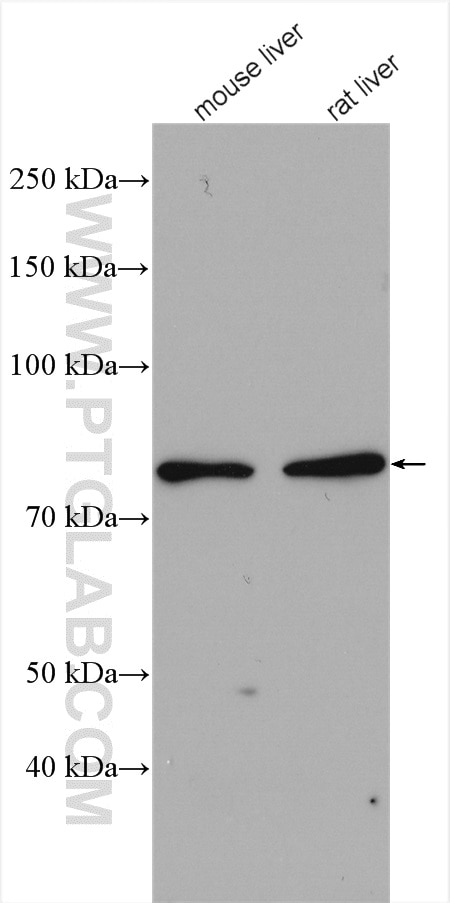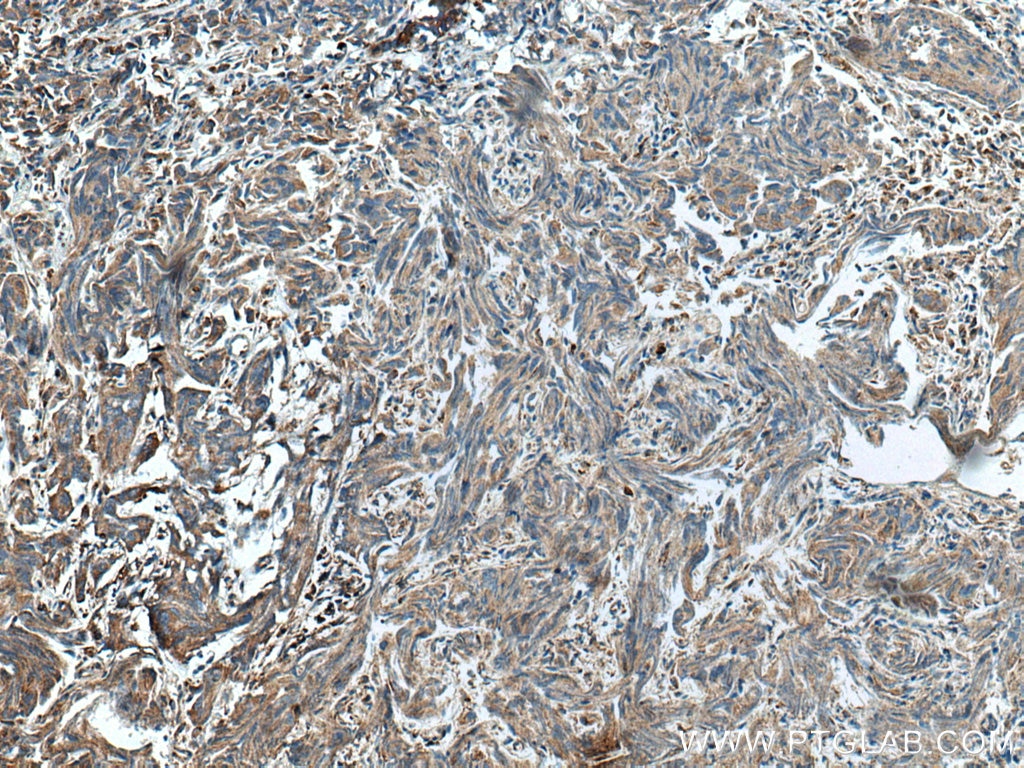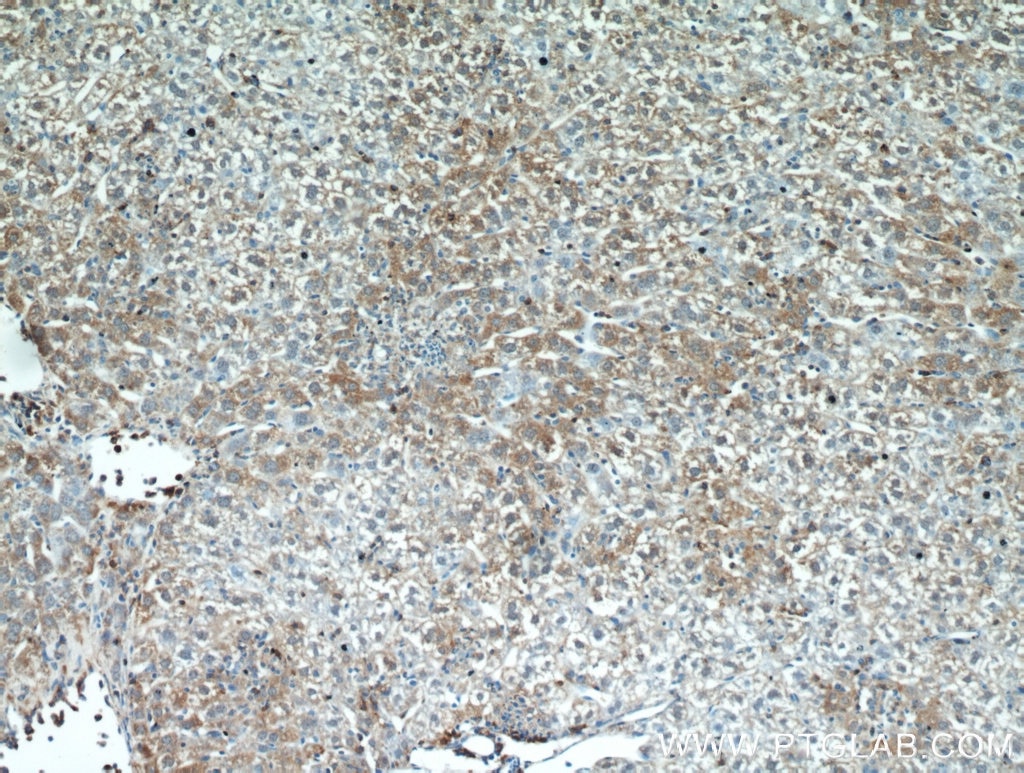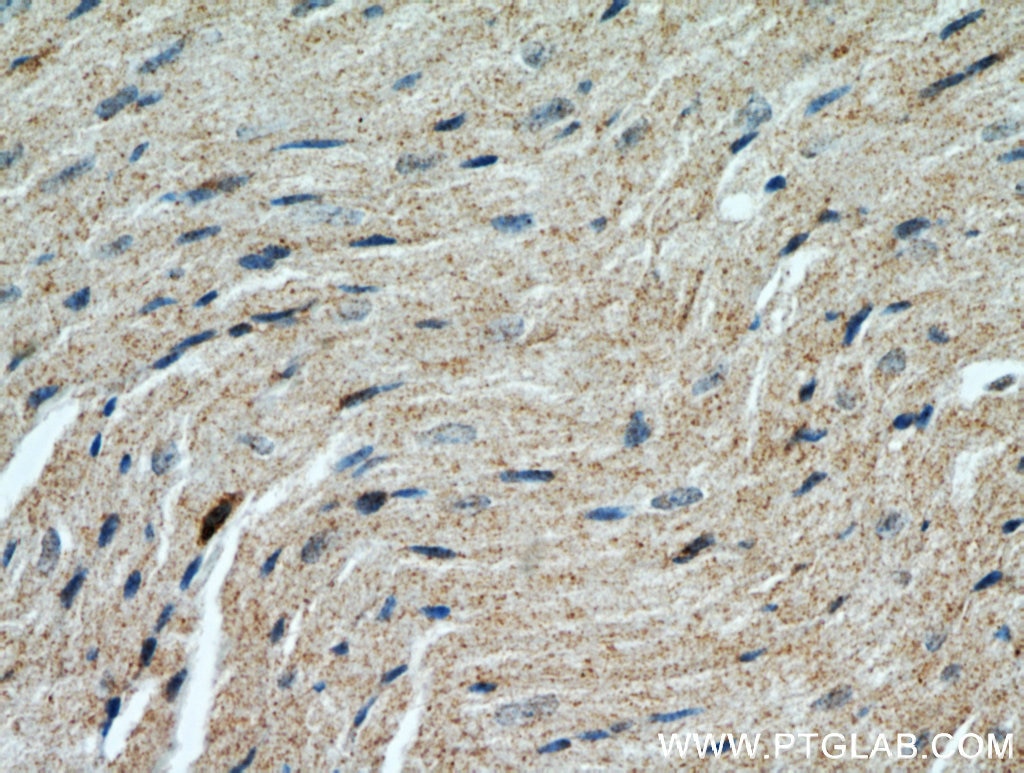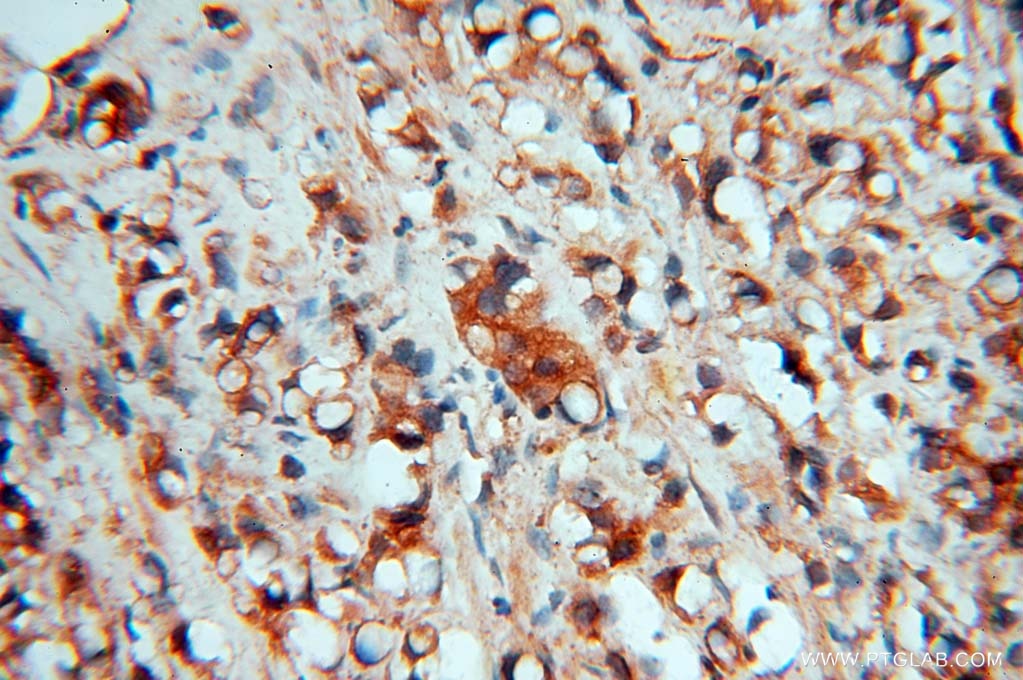- Featured Product
- KD/KO Validated
HSD17B4 Polyklonaler Antikörper
HSD17B4 Polyklonal Antikörper für WB, IHC, IF/ICC, IP, ELISA
Wirt / Isotyp
Kaninchen / IgG
Getestete Reaktivität
human, Maus, Ratte
Anwendung
WB, IHC, IF/ICC, IP, ELISA
Konjugation
Unkonjugiert
Kat-Nr. : 15116-1-AP
Synonyme
Geprüfte Anwendungen
| Erfolgreiche Detektion in WB | Mauslebergewebe, HepG2-Zellen, Maushirngewebe, Mausherzgewebe, Rattenlebergewebe |
| Erfolgreiche IP | Maushirngewebe |
| Erfolgreiche Detektion in IHC | humanes Prostatakarzinomgewebe, Mausherzgewebe, Mauslebergewebe Hinweis: Antigendemaskierung mit TE-Puffer pH 9,0 empfohlen. (*) Wahlweise kann die Antigendemaskierung auch mit Citratpuffer pH 6,0 erfolgen. |
| Erfolgreiche Detektion in IF/ICC | HeLa-Zellen |
Empfohlene Verdünnung
| Anwendung | Verdünnung |
|---|---|
| Western Blot (WB) | WB : 1:2000-1:10000 |
| Immunpräzipitation (IP) | IP : 0.5-4.0 ug for 1.0-3.0 mg of total protein lysate |
| Immunhistochemie (IHC) | IHC : 1:200-1:800 |
| Immunfluoreszenz (IF)/ICC | IF/ICC : 1:10-1:100 |
| It is recommended that this reagent should be titrated in each testing system to obtain optimal results. | |
| Sample-dependent, check data in validation data gallery | |
Veröffentlichte Anwendungen
| WB | See 16 publications below |
Produktinformation
15116-1-AP bindet in WB, IHC, IF/ICC, IP, ELISA HSD17B4 und zeigt Reaktivität mit human, Maus, Ratten
| Getestete Reaktivität | human, Maus, Ratte |
| In Publikationen genannte Reaktivität | human, Maus, Ratte |
| Wirt / Isotyp | Kaninchen / IgG |
| Klonalität | Polyklonal |
| Typ | Antikörper |
| Immunogen | HSD17B4 fusion protein Ag7165 |
| Vollständiger Name | hydroxysteroid (17-beta) dehydrogenase 4 |
| Berechnetes Molekulargewicht | 80 kDa |
| Beobachtetes Molekulargewicht | 80 kDa, 45 kDa |
| GenBank-Zugangsnummer | BC003098 |
| Gene symbol | HSD17B4 |
| Gene ID (NCBI) | 3295 |
| Konjugation | Unkonjugiert |
| Form | Liquid |
| Reinigungsmethode | Antigen-Affinitätsreinigung |
| Lagerungspuffer | PBS with 0.02% sodium azide and 50% glycerol |
| Lagerungsbedingungen | Bei -20°C lagern. Nach dem Versand ein Jahr lang stabil Aliquotieren ist bei -20oC Lagerung nicht notwendig. 20ul Größen enthalten 0,1% BSA. |
Hintergrundinformationen
HSD17B4 (17-beta-hydroxysteroid dehydrogenase 4) is also named as Peroxisomal multifunctional enzyme type 2, D-bifuntional protein or multifunctional protein 2. It codes for a 80 kDa enzyme containing three distinct functional domains and is localized in peroxisomes. It is a bifunctional enzyme acting on the peroxisomal beta-oxidation pathway for fatty acids and catalyzing the formation of 3-ketoacyl-CoA intermediates from both straight-chain and 2-methyl-brancked-chian fatty acids. After peroxisomal import, the full-length protein is proteolytically cleaved to yield a 35-kDa dehydrogenase subunit and a 45-kDa hydratase subunit containing the hydratase and SCP domains (PMID: 28868548, 24602372).
Protokolle
| PRODUKTSPEZIFISCHE PROTOKOLLE | |
|---|---|
| WB protocol for HSD17B4 antibody 15116-1-AP | Protokoll herunterladen |
| IHC protocol for HSD17B4 antibody 15116-1-AP | Protokoll herunterladenl |
| IF protocol for HSD17B4 antibody 15116-1-AP | Protokoll herunterladen |
| IP protocol for HSD17B4 antibody 15116-1-AP | Protokoll herunterladen |
| STANDARD-PROTOKOLLE | |
|---|---|
| Klicken Sie hier, um unsere Standardprotokolle anzuzeigen |
Publikationen
| Species | Application | Title |
|---|---|---|
Commun Biol Transmembrane protein 135 regulates lipid homeostasis through its role in peroxisomal DHA metabolism | ||
Neurobiol Dis Peroxisomal multifunctional protein-2 deficiency causes neuroinflammation and degeneration of Purkinje cells independent of very long chain fatty acid accumulation. | ||
Sci Rep Expression of steroidogenic enzymes and metabolism of steroids in COS-7 cells known as non-steroidogenic cells. | ||
Cells Cell Type-Selective Loss of Peroxisomal β-Oxidation Impairs Bipolar Cell but Not Photoreceptor Survival in the Retina. | ||
Mol Cells The Peroxisomal Localization of Hsd17b4 Is Regulated by Its Interaction with Phosphatidylserine. | ||
Biology (Basel) In Situ Peroxidase Labeling Followed by Mass-Spectrometry Reveals TIA1 Interactome. |
